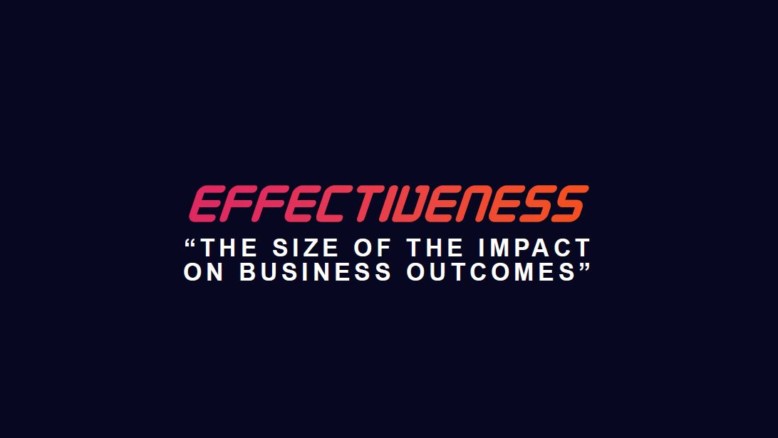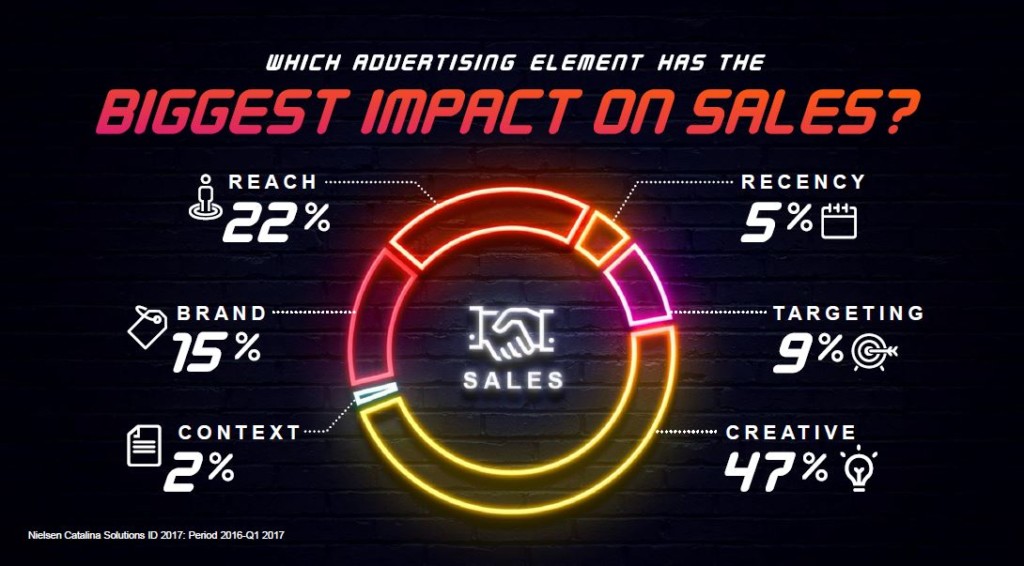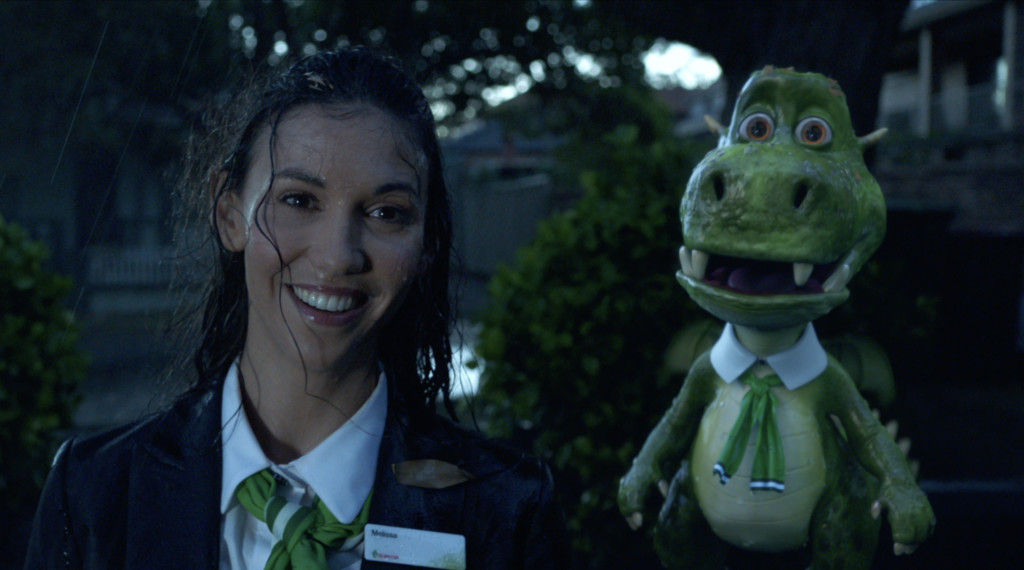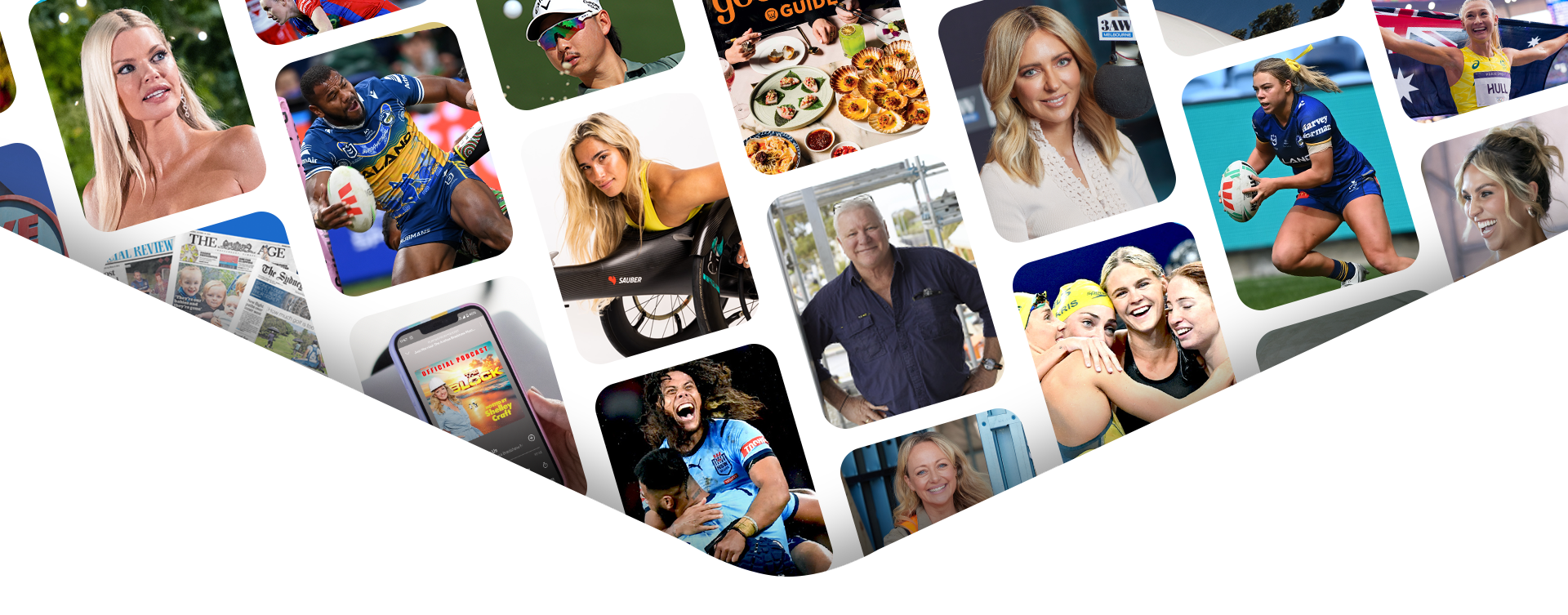How to maximise effectiveness: creative or media?

How to maximise effectiveness: creative or media?

As brands face new challenges as a result of COVID-19, the question of creative investment versus media spend is becoming even more important with every marketing budget dollar looked at to deliver business results.
It leaves marketers faced with the challenge of creative or reach?
Presenting at Powered by Nine’s Big Ideas Store on a session on creative effectiveness, Nine’s Director of Effectiveness, Jonathan Fox, cited research from Nielsen Catalina breaking down the utopia of getting creativity and media spend right.
“Nielsen Catalina research found almost 50 per cent of advertising effectiveness is due to the creative alone, the other half is down to the delivery of advertising. After all, an ad needs to be seen to be effective, but when enough people see it, it’s all about the creative,” said Fox.
“Research tells us effective creative should be simple, emotional and well-branded. To max out on branded attention, use characters and sonic brand cues. If you follow these rules, you’ll deliver a highly effective ad that delivers big business outcomes.”
However, for former adman, Russel Howcroft, who is joining Nine Radio’s 3AW network in the Breakfast slot alongside long-time co-anchor Ross Stevenson, reach should be the primary focus, with good creative a secondary concern.
“What we need to do is spend as much money as we possibly can to get as much reach as we possibly can, while bearing in mind you need to create something sticky and interesting. It’s really tough to do,” he said. “The utopia is possible, but if I was to say chicken or egg, I’d be reaching for reach first and foremost and then doing my best to do good creative work.”
But for Mike Spirkovski, Chief Creative Officer at Saatchi & Saatchi Australia, excellent creative can create its own reach.
“It’s always about getting out there to your audience, but if you do something amazing people will seek it out. Focus on doing something great and it will push itself out to a degree,” he said.
“I find the fragmentation, having say $10 million and spreading that out wide, sort of dilutes the idea or the availability of being able to do something amazing. If you focus on doing something amazing and then find a way to get that out in the marketplace, it can actually help. It’s about the idea. For me, it’s about coming up with something really fresh, really unique, something consumers are going to love.”
Howcroft reminded the audience that the concept of good creative is subjective.
“We’ve got to be very careful about being binary, about what is good content – simply repeating the same thing is a low-cost way,” he said.

“There are rules, there are ways one can do this [ensure effectiveness]. Frankly, it’s more important to repeat, repeat, repeat the same message that’s working then try to find a new way,” he added, listing Bunnings’ marketing with its repeated tagline “lowest prices are just the beginning” as an example. Bunnings only started to move away from this tagline at the start of 2020 after 25 years of using it in market.
Staying with a marketing message over the long-term can be the hardest thing for a marketing team to do, according to Jenny Melhuish, Head of Brand, Advertising and Media for Westpac Group which includes Westpac, St George, Bank of Melbourne, BankSA, BT and RAMS.
“The hardest thing is sticking with it – those results don’t come quickly. It’s so easy to want to divert back to that activation layer. When you turn that tap on you can help customers immediately because you have offers, while that brand layer is relentlessly hard to deliver on,” she said.
But being relentless and “sticking with it” can deliver results, as the group’s St George Bank has seen through its use of the Little Dragon, or LD.
“He’s meant to be the fire in your belly. It’s an interesting asset for the St George brand because we can have a conversation with consumers which doesn’t sound like we’re speaking to them like a bank,” said Melhuish.

“The Chase, which is a new brand campaign for St George talking about our St George difference, is one we launched in lockdown, and after six weeks we saw a brand linkage of about 92-93 per cent, which is amazing, but it’s taken five years to build that.
“We’ve got Pippa the Penguin in Bank of Melbourne and after about a year she hit 74 per cent, so you can see it builds over time.”
For the banking brands within the Westpac Group, a character like LD or Pippa the Penguin help create brand linkage.
“In fact for the banking group brands, most have a character and a code because we have different challenges,” Melhuish said. “Our share of voice is a lot lower for those brands so we need to make sure we get the cut-through and brand linkage. So if you see an ad and you don’t attribute it back to us straight away, you’re just giving someone else a free kick.
“We want to make sure our customers know it’s us and what we have to offer.”
For marketers wanting to instil confidence in a campaign, Fox noted the role of data to conduct creative testing.
“Many businesses will put your ad out there in front of thousands of people and you can ask many questions to pull out campaign messaging, brand recall, and start to benchmark it to previous ads,” he said.
“Companies like Gemba, Nielsen, Ipsos, Kantar – you can run creative testing, and even through our own 9Nation panel you can get some confidence with your ad.”






